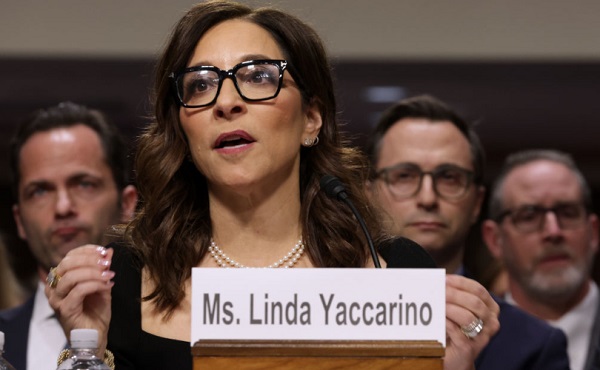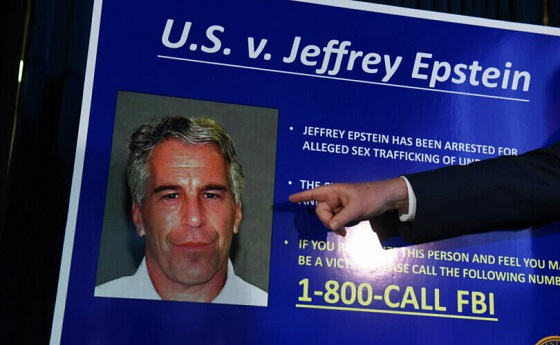Business
Cash-Strapped California Inches Closer To Handing Taxpayer Home Loans To Illegal Migrants

 From the Daily Caller News Foundation
From the Daily Caller News Foundation
California lawmakers are one step closer to making hundreds of millions of taxpayer-funded home loans available to residents living in the country illegally.
Democrats on the California Senate Appropriations Committee unanimously approved AB 1840 to move forward on Thursday, according to an official vote tally of the legislation. The bill has one last chance to be struck down on the Senate floor, where Democrats wield majority power, before it lands on Gov. Gavin Newsom’s desk.
The legislation seeks to amend the California Dream For All Shared Appreciation Loan program, an initiative launched last year that provides first-time homebuyers with a loan of up to 20% of the house’s purchase price for down payment or closing cost. If passed and signed into law, illegal migrants living in California would be eligible to apply for a piece of the pie.
“Once again, California has chosen to prioritize illegal immigration and fiscal irresponsibility over the needs of its citizens, all while facing a $60 billion deficit that will ultimately be passed onto taxpayers,” San Diego County Supervisor Jim Desmond said in a statement provided to the Daily Caller News Foundation.
“California is in dire financial straits, yet lawmakers continue to prioritize programs that incentivize illegal immigration and strain local resources,” Desmond continued. “Expanding this program to include illegal immigrants is not just another handout — it’s a massive overreach that shifts the financial burden onto law-abiding taxpayers.”
These taxpayer-funded home loans are interest-free and borrowers are not required to dole out monthly payments, making the program incredibly popular with California residents.
When applications for the $300 million program first opened up in May 2023 — offering interest-free loans to roughly 2,300 middle and lower-income homebuyers — the money ran out in less than two weeks, according to the LA Times. State officials have since tightened eligibility for the program, requiring that at least one of the applicants be a first-generation home buyer and replacing the first-come-first-serve model with a lottery.
Despite California struggling to cope with a budget deficit in the tens of billions of dollars, and availability for the program incredibly tight already, one state lawmaker felt the loan program wasn’t inclusive enough.
Assemblymember Joaquin Arambula, a Democrat from Fresno, first introduced AB 1840 in January, with the goal of broadening the definition of “first-time home buyer” to include illegal immigrants. The lawmaker argued in March that the “social and economic benefits of homeownership should be available to everyone,” according to a local news KTLA. Arambula did not immediately respond to the the DCNF’s request for comment.
The legislation has since easily passed the Democrat-dominated California Assembly and sailed through the Senate Appropriations Committee — with opposition exclusively relegated to GOP lawmakers.
“California’s budget deficit continues to grow and Democratic lawmakers are so out of touch with everyday Californians that they and are quite literally taking money away from law-abiding citizens, their own constituents, and handing it over as a free gift to people who broke federal law to cross the border illegally,” California Sen. Brian Dahle stated to the DCNF.
“There’s no accountability and transparency when it comes to the Democrats’ spending sprees, and it’s unfortunate because many Californians see homeownership as nothing more than an illusion at this point,” Dahle continued.
California is experiencing a massive budget shortfall.
State lawmakers in June approved a budget that slashed spending and temporarily raised taxes on businesses in an effort to shore up a nearly $50 billion budget deficit, according to the Associated Press. The dire financial situation marks a far cry from the more than $100 billion surplus the state enjoyed roughly two years ago, but those revenue spikes proved only temporary as rising unemployment, inflation and a slowing of the tech industry has battered California pocketbooks.
The state’s deficit was roughly $ 32 billion in 2023, which grew to more than $46 billion earlier this year and is now around $60 billion, according to California Republicans — drawing questions as to why lawmakers would open up a highly-coveted loan program to a large swath of the population that does not hold legal status.
Nearly two million illegal migrants live in California, according to data published by the Pew Research Center in July.
It’s not immediately clear if Newsom will sign the legislation. When reached for comment, a spokesperson said the governor’s office does not typically comment on pending legislation, adding that the governor would “evaluate the legislation on its merits” should it reach his desk.
Approval of AB 1840 came on the same day that Vice President Kamala Harris’ campaign announced she would be unveiling a proposal similar to her home state’s current program: $25,000 in down payment support for first-time homebuyers, including greater support for first-generation homeowners.
It’s not clear if the proposal from Harris — who has recently attempted to cast herself as more of a border hawk — would explicitly exclude illegal immigrants. Her campaign did not respond to a request for comment from the DCNF.
California Republicans, in the meantime, are left balking at their own state’s legislative actions.
“Many legal California residents can’t afford a home in their own state,” California Sen. Brian Jones said to the DCNF. He is one of only two GOP members on the Senate Appropriations Committee.
“Instead of addressing the housing crisis, radical Democrat lawmakers want to help illegal immigrants buy houses with the gift of taxpayer funds,” Jones continued. “With a $62 billion budget deficit, we need to focus on preserving essential government functions, not unfair political spending for those here illegally.”
Business
Trump confirms 35% tariff on Canada, warns more could come

Quick Hit:
President Trump on Thursday confirmed a sweeping new 35% tariff on Canadian imports starting August 1, citing Canada’s failure to curb fentanyl trafficking and retaliatory trade actions.
Key Details:
- In a letter to Canadian Prime Minister Mark Carney, Trump said the new 35% levy is in response to Canada’s “financial retaliation” and its inability to stop fentanyl from reaching the U.S.
- Trump emphasized that Canadian businesses that relocate manufacturing to the U.S. will be exempt and promised expedited approvals for such moves.
- The administration has already notified 23 countries of impending tariffs following the expiration of a 90-day negotiation window under Trump’s “Liberation Day” trade policy.
Diving Deeper:
President Trump escalated his tariff strategy on Thursday, formally announcing a 35% duty on all Canadian imports effective August 1. The move follows what Trump described as a breakdown in trade cooperation and a failure by Canada to address its role in the U.S. fentanyl crisis.
“It is a Great Honor for me to send you this letter in that it demonstrates the strength and commitment of our Trading Relationship,” Trump wrote to Prime Minister Mark Carney. He added that the tariff response comes after Canada “financially retaliated” against the U.S. rather than working to resolve the flow of fentanyl across the northern border.
Trump’s letter made clear the tariff will apply broadly, separate from any existing sector-specific levies, and included a warning that “goods transshipped to evade this higher Tariff will be subject to that higher Tariff.” The president also hinted that further retaliation from Canada could push rates even higher.
However, Trump left the door open for possible revisions. “If Canada works with me to stop the flow of Fentanyl, we will, perhaps, consider an adjustment to this letter,” he said, adding that tariffs “may be modified, upward or downward, depending on our relationship.”
Canadian companies that move operations to the U.S. would be exempt, Trump said, noting his administration “will do everything possible to get approvals quickly, professionally, and routinely — In other words, in a matter of weeks.”
The U.S. traded over $762 billion in goods with Canada in 2024, with a trade deficit of $63.3 billion, a figure Trump called a “major threat” to both the economy and national security.
Speaking with NBC News on Thursday, Trump suggested even broader tariff hikes are coming, floating the idea of a 15% or 20% blanket rate on all imports. “We’re just going to say all of the remaining countries are going to pay,” he told Meet the Press moderator Kristen Welker, adding that “the tariffs have been very well-received” and noting that the stock market had hit new highs that day.
The Canadian announcement is part of a broader global tariff rollout. In recent days, Trump has notified at least 23 countries of new levies and revealed a separate 50% tariff on copper imports.
“Not everybody has to get a letter,” Trump said when asked if other leaders would be formally notified. “You know that. We’re just setting our tariffs.”
Business
Trump slaps Brazil with tariffs over social media censorship

From LifeSiteNews
By Dan Frieth
In his letter dated July 9, 2025, addressed to President Luiz Inácio Lula da Silva, Trump ties new U.S. trade measures directly to Brazilian censorship.
U.S. President Donald Trump has launched a fierce rebuke of Brazil’s moves to silence American-run social media platforms, particularly Rumble and X.
In his letter dated July 9, 2025, addressed to President Luiz Inácio Lula da Silva, Trump ties new U.S. trade measures directly to Brazilian censorship.
He calls attention to “SECRET and UNLAWFUL Censorship Orders to U.S. Social Media platforms,” pointing out that Brazil’s Supreme Court has been “threatening them with Millions of Dollars in Fines and Eviction from the Brazilian Social Media market.”


Trump warns that these actions are “due in part to Brazil’s insidious attacks on Free Elections, and the fundamental Free Speech Rights of Americans,” and states: “starting on August 1, 2025, we will charge Brazil a Tariff of 50% on any and all Brazilian products sent into the United States, separate from all Sectoral Tariffs.” He also adds that “Goods transshipped to evade this 50% Tariff will be subject to that higher Tariff.”
Brazil’s crackdown has targeted Rumble after it refused to comply with orders to block the account of Allan dos Santos, a Brazilian streamer living in the United States.
On February 21, 2025, Justice Alexandre de Moraes ordered Rumble’s suspension for non‑compliance, saying it failed “to comply with court orders.”
Earlier, from August to October 2024, Moraes had similarly ordered a nationwide block on X.
The court directed ISPs to suspend access and imposed fines after the platform refused to designate a legal representative and remove certain accounts.
Elon Musk responded: “Free speech is the bedrock of democracy and an unelected pseudo‑judge in Brazil is destroying it for political purposes.”
By linking censorship actions, particularly those targeting Rumble and X, to U.S. trade policy, Trump’s letter asserts that Brazil’s judiciary has moved into the arena of foreign policy and economic consequences.
The tariffs, he makes clear, are meant, at least in part, as a response to Brazil’s suppression of American free speech.
Trump’s decision to impose tariffs on Brazil for censoring American platforms may also serve as a clear signal to the European Union, which is advancing similar regulatory efforts under the guise of “disinformation” and “online safety.”
With the EU’s Digital Services Act and proposed “hate speech” legislation expanding government authority over content moderation, American companies face mounting pressure to comply with vague and sweeping takedown demands.
By framing censorship as a violation of U.S. free speech rights and linking it to trade consequences, Trump is effectively warning that any foreign attempt to suppress American voices or platforms could trigger similar economic retaliation.
Reprinted with permission from Reclaim The Net.
-

 Also Interesting2 days ago
Also Interesting2 days ago9 Things You Should Know About PK/PD in Drug Research
-

 Business2 days ago
Business2 days agoCannabis Legalization Is Starting to Look Like a Really Dumb Idea
-

 Business2 days ago
Business2 days agoWEF-linked Linda Yaccarino to step down as CEO of X
-

 Business2 days ago
Business2 days ago‘Experts’ Warned Free Markets Would Ruin Argentina — Looks Like They Were Dead Wrong
-

 Bruce Dowbiggin1 day ago
Bruce Dowbiggin1 day agoThe Covid 19 Disaster: When Do We Get The Apologies?
-

 Media2 days ago
Media2 days agoCBC journalist quits, accuses outlet of anti-Conservative bias and censorship
-

 Business1 day ago
Business1 day agoCarney government should recognize that private sector drives Canada’s economy
-

 Automotive2 days ago
Automotive2 days agoAmerica’s EV Industry Must Now Compete On A Level Playing Field





